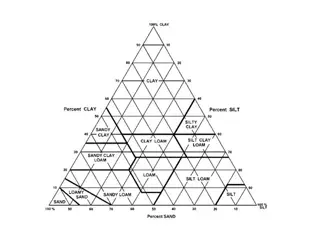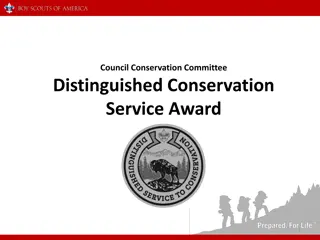Interactive Sustainability Curriculum for Conservation Training
Engage students in activities focusing on energy, agriculture, waste management, animals and ecosystems, consumption, and other sustainability topics. Lessons include understanding energy sources, land degradation, waste sorting, nature walks, tote bag making, and ecological footprints. Encourage critical thinking about ecological impact and foster sustainable practices.
Download Presentation

Please find below an Image/Link to download the presentation.
The content on the website is provided AS IS for your information and personal use only. It may not be sold, licensed, or shared on other websites without obtaining consent from the author.If you encounter any issues during the download, it is possible that the publisher has removed the file from their server.
You are allowed to download the files provided on this website for personal or commercial use, subject to the condition that they are used lawfully. All files are the property of their respective owners.
The content on the website is provided AS IS for your information and personal use only. It may not be sold, licensed, or shared on other websites without obtaining consent from the author.
E N D
Presentation Transcript
ACT: Active Conservation Training A Guide to Sustainability Curriculum By Connor Johnson, Jillian Shrader, Kristyna Bradley, Anna Nelson, and Libby Chelsvig
Energy Lesson Plan Understanding what energy is and how people use it Energy usage and sources in everyday material things Fossil fuels Renewable energies Solar Wind Hydropower
Agriculture Lesson Plan: Land degradation due to farming Overgrazing Deforestation Desertification Loss of Biodiversity Corn Basics Difference between field corn and sweet corn Problems with growing field corn Herbicides and Pesticides Solutions
Waste Lesson Plan: Waste Management Activity: Waste Sorting Game Ask: What is waste? Does Nature create waste? Sorting waste into trash, recycling, and compost What has to be thrown out What can be repurposed to help make nutrient rich soil What can be recycled Plastic can take 1,000 years to degrade in a landfill, aluminum 500, ect Discuss product life and death 3 R s and how they interconnect with one another. Encourage students to take discussion and recycling ideas from the classroom home.
Animals and Ecosystems Lesson Plan: Animals and Ecosystems Activity: Nature Walk 20 minutes to a few hours Explore local parks, green spaces Education about local nature Flora and fauna Geography and geology Public lands Leave No Trace Alternative forms of transportation What are ecosystems and their services What they provide Why they re important Examples of animals that make ecosystems go round Birds, bees, bats, ect
Consumption Lesson Plan: Activity: Make your own tote bag Have students bring an old T-shirt, stained, too small, etc. Students will also need scissors, and can use markers or extra string as desired. Make 4-8 inch vertical cuts from bottom, tie pieces together in knots to close bottom of bag or sew if preferred. Cut sleeves and collar out to create straps Decorate as wanted Role of consumption in sustainability efforts Consumerism and impact an American society Sustainable Consumption patterns
Other Activities Trivia Jenga: Ecological Footprint: Estimate individual footprints Compare and discuss results Discuss methods to decrease their ecological footprints Challenge to create lowest, realistic, footprint value Encourage students to make changes in their lives to reflect their revised ecological footprints























